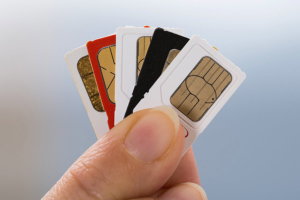The Signs to Look for When Looking at a Possible Phishing Attack
One of the common ways that hackers can trick their victims is through a phishing attack. They can do this by writing and sending an email that looks like it comes from a real source. This email might ask you for things like your username or password for a certain account, or it might have an attachment or link, which downloads malicious software to your network or computer. Some of these attacks even look like they are coming from a client, an employee, or your boss.
 Here are some signs that you might be the potential victim of a phishing attack.
Here are some signs that you might be the potential victim of a phishing attack.
You are Asked for Personal Info
One of the signs that an email is a phishing email is if you are asked for personal info. Most of these emails look extremely real, and they seem like they are being sent from a trusted source, like your bank, a local hospital, or a site like PayPal. But they are scams. Think of it this way; your bank won’t ask for your bank account information. It already knows your account info, so if something seems weird, it’s probably a scam.
You are Asked for Money
If you get an email asking for money, even if it looks legit, it is probably a scam. For instance, if a client emails you and asks for a wire transfer, call them up and ask if it’s real. What makes this such a good scam is that in most cases, the scammer has logged into the person’s account because they steal the credentials. So, you may actually be getting an email from the account of your company’s CEO…but it’s not the CEO who is writing the email.
You Sense Urgency
If you get an email that has a sense of urgency, like an urgent transfer, it is probably a scam. As soon as you see that something is “urgent,” bells and whistles should go off in your head. Hackers like to cause panic because they know people are more likely to rush to do as asked. Let’s look at this example: you might get an email from your back saying that your bank account has been compromised, and it’s urgent that you go to a certain site, enter your account details, and confirm your account number. Well, guess what? If you do this, the scammer now has access to your bank account information.
The Website or Email Address Look Weird
You might also get an email that has a weird looking address or website. In general, hackers try to put the name of a company you might recognize in the email address. But that doesn’t mean it’s real. For example, you might bank with Chase Bank. You get an email from @chasebank1.com but guess what? That’s not really Chase. All Chase emails will simply be from @chase.com.
Think About Your Relationship with the Company
You also should think about the relationship you have with the company you are getting an email from. For example, any email you get from your bank or your health insurance company should come from the company’s system, not from a weird looking email address. Also, if you don’t even have an account with a company you are getting emails from, it’s certainly a scam.
You Get an Email from Yourself
Look at the email closely. Is it coming from…you? Technically, of course, it isn’t, but scammers do this trick a lot.
There are Many Emails in the “To:” Area of the Email
You also want to look at who the email is going to. If there are a lot of email addresses in the “To:” section, it is likely a scam.
Keep an Eye Out for Links
One of the ways that people fall for scams is because they click on the links that are found in emails. Some of these links will download malicious software to your computer and others might take you to a page where someone will try to trick you into giving personal information. Before clicking on a link, hover over it and take a look. If the address is weird, don’t click it.
Spelling or Grammar Errors
Most of these emails that are trying to scam you come from overseas, so it’s very common to see spelling or grammar errors in the email. If you see this, it’s very likely a scam.
Look for Attachments
Finally, if the email has an odd-looking attachment like a Zip file, a PDF, or Word doc, don’t ever open it. It is very likely that there is malware, or a virus, attached. If you believe the attachment could be real, scan it with your antivirus software to be safe.
Written by Robert Siciliano, CEO of Credit Parent, Head of Training & Security Awareness Expert at Protect Now, #1 Best Selling Amazon author, Media Personality & Architect of CSI Protection Certification.

 Account Takeovers
Account Takeovers What is SIM Swapping?
What is SIM Swapping? Are you at risk of getting scammed by Scarlet Widow? The group generally focuses on medium to large US businesses and nonprofits including the United Way, Boy Scouts of American, and YMCA chapter. The scammers send emails to employees of these organizations, and though most people understand that the emails are, indeed, scams, it only takes one person to put your organization at risk.
Are you at risk of getting scammed by Scarlet Widow? The group generally focuses on medium to large US businesses and nonprofits including the United Way, Boy Scouts of American, and YMCA chapter. The scammers send emails to employees of these organizations, and though most people understand that the emails are, indeed, scams, it only takes one person to put your organization at risk. One day he saw that a young woman, Rebecca Santhiago, was asking for a friend request on his Facebook page.
One day he saw that a young woman, Rebecca Santhiago, was asking for a friend request on his Facebook page. Fake Bitcoin Exchanges
Fake Bitcoin Exchanges This was a very simple act, one that most of us do every day. However, this is why it is so important that your staff is up to date on security awareness. How can you do this? Here are some tips:
This was a very simple act, one that most of us do every day. However, this is why it is so important that your staff is up to date on security awareness. How can you do this? Here are some tips: First, the moment a person brings in their personal phone to work, there is a fusion of personal and business tasks that occur. And, equally as bad, company issued devices are used for personal use as much, if not more than the employees own devices. Not sure you believe this? Here are some stats:
First, the moment a person brings in their personal phone to work, there is a fusion of personal and business tasks that occur. And, equally as bad, company issued devices are used for personal use as much, if not more than the employees own devices. Not sure you believe this? Here are some stats: According to researchers at
According to researchers at 























